Home » Basics
Small wind turbines have less generating capacity than the huge commercial turbines  found on wind farms, but their reduced costs and added versatility allow wind power to be used in a wider set of applications. These small turbines are used primarily for distributed generation generating electricity for use on-site, rather than transmitting energy over the electric grid from central power plants or wind farms. Small turbines are a small-scale alternative to solar panels, providing clean renewable energy to rural homes, farms and businesses. This reduces reliance on large fossil-fuel power plants and lowers the burden on the electrical transmission grid.
found on wind farms, but their reduced costs and added versatility allow wind power to be used in a wider set of applications. These small turbines are used primarily for distributed generation generating electricity for use on-site, rather than transmitting energy over the electric grid from central power plants or wind farms. Small turbines are a small-scale alternative to solar panels, providing clean renewable energy to rural homes, farms and businesses. This reduces reliance on large fossil-fuel power plants and lowers the burden on the electrical transmission grid.
 found on wind farms, but their reduced costs and added versatility allow wind power to be used in a wider set of applications. These small turbines are used primarily for distributed generation generating electricity for use on-site, rather than transmitting energy over the electric grid from central power plants or wind farms. Small turbines are a small-scale alternative to solar panels, providing clean renewable energy to rural homes, farms and businesses. This reduces reliance on large fossil-fuel power plants and lowers the burden on the electrical transmission grid.
found on wind farms, but their reduced costs and added versatility allow wind power to be used in a wider set of applications. These small turbines are used primarily for distributed generation generating electricity for use on-site, rather than transmitting energy over the electric grid from central power plants or wind farms. Small turbines are a small-scale alternative to solar panels, providing clean renewable energy to rural homes, farms and businesses. This reduces reliance on large fossil-fuel power plants and lowers the burden on the electrical transmission grid. Wind power has always given the necessary propulsive force to sailing ships and has been also used to run windmills. Then, this type of energy has fallen into disuse due to the spreading of electric power and thanks to the availability of low cost machines supplied by fossil fuel. However, the recent attention paid to climate changes, the demand to increase the amount of green energy and fear of a decrease of oil fuel in the future have promoted a renewed interest in the production of electrical energy from renewable sources and also from the wind power.
Wind power has always given the necessary propulsive force to sailing ships and has been also used to run windmills. Then, this type of energy has fallen into disuse due to the spreading of electric power and thanks to the availability of low cost machines supplied by fossil fuel. However, the recent attention paid to climate changes, the demand to increase the amount of green energy and fear of a decrease of oil fuel in the future have promoted a renewed interest in the production of electrical energy from renewable sources and also from the wind power.
Before wind turbines can be installed, the most appropriate location or locations for them needs to be determined.  The major objective of the siting process is to locate a wind turbine (or turbines) such that net revenue is maximized while minimizing such things as noise, environmental and visual impacts, and overall cost of energy. The scope of this process can have a very wide range, which could include everything from wind prospecting for suitable turbine sites over a wide geographical area to considering the placement of a single wind turbine on a site or of multiple wind turbines in a wind farm (this is generally called micrositing).
The major objective of the siting process is to locate a wind turbine (or turbines) such that net revenue is maximized while minimizing such things as noise, environmental and visual impacts, and overall cost of energy. The scope of this process can have a very wide range, which could include everything from wind prospecting for suitable turbine sites over a wide geographical area to considering the placement of a single wind turbine on a site or of multiple wind turbines in a wind farm (this is generally called micrositing).
 The major objective of the siting process is to locate a wind turbine (or turbines) such that net revenue is maximized while minimizing such things as noise, environmental and visual impacts, and overall cost of energy. The scope of this process can have a very wide range, which could include everything from wind prospecting for suitable turbine sites over a wide geographical area to considering the placement of a single wind turbine on a site or of multiple wind turbines in a wind farm (this is generally called micrositing).
The major objective of the siting process is to locate a wind turbine (or turbines) such that net revenue is maximized while minimizing such things as noise, environmental and visual impacts, and overall cost of energy. The scope of this process can have a very wide range, which could include everything from wind prospecting for suitable turbine sites over a wide geographical area to considering the placement of a single wind turbine on a site or of multiple wind turbines in a wind farm (this is generally called micrositing).  Instrumentation for wind energy applications is an important subject and has been discussed in detail by numerous authors. In addition, the performance test codes for wind turbines of the American Society of Mechanical Engineers and the measurement standards of the American Wind Energy Association contain much useful information on wind instrumentation equipment and procedures. For each wind energy application, the type and amount of instrumentation required varies widely.
Instrumentation for wind energy applications is an important subject and has been discussed in detail by numerous authors. In addition, the performance test codes for wind turbines of the American Society of Mechanical Engineers and the measurement standards of the American Wind Energy Association contain much useful information on wind instrumentation equipment and procedures. For each wind energy application, the type and amount of instrumentation required varies widely.
The headline "Chinese turbines" has dominated the news media and  blogs regarding wind power during November after U.S. Sen. Charles Schumer sent a letter to U.S. Energy Secretary Dr. Steven Chu and commented, "I'm all for investing in clean energy, but we should be investing in the United States, not China. The goal of the stimulus was to spur job creation here, not overseas." Schumer was referring to a 648-megawatt wind farm in west Texas being developed by Cielo Wind Power and U.S. Renewable Energy Group with $450 million in funds from the American Recovery and Reinvestment Act.
blogs regarding wind power during November after U.S. Sen. Charles Schumer sent a letter to U.S. Energy Secretary Dr. Steven Chu and commented, "I'm all for investing in clean energy, but we should be investing in the United States, not China. The goal of the stimulus was to spur job creation here, not overseas." Schumer was referring to a 648-megawatt wind farm in west Texas being developed by Cielo Wind Power and U.S. Renewable Energy Group with $450 million in funds from the American Recovery and Reinvestment Act.
 blogs regarding wind power during November after U.S. Sen. Charles Schumer sent a letter to U.S. Energy Secretary Dr. Steven Chu and commented, "I'm all for investing in clean energy, but we should be investing in the United States, not China. The goal of the stimulus was to spur job creation here, not overseas." Schumer was referring to a 648-megawatt wind farm in west Texas being developed by Cielo Wind Power and U.S. Renewable Energy Group with $450 million in funds from the American Recovery and Reinvestment Act.
blogs regarding wind power during November after U.S. Sen. Charles Schumer sent a letter to U.S. Energy Secretary Dr. Steven Chu and commented, "I'm all for investing in clean energy, but we should be investing in the United States, not China. The goal of the stimulus was to spur job creation here, not overseas." Schumer was referring to a 648-megawatt wind farm in west Texas being developed by Cielo Wind Power and U.S. Renewable Energy Group with $450 million in funds from the American Recovery and Reinvestment Act.
Building a wind farm involves several steps to ensure successful planning, construction, and operation. Here are 10 key steps typically involved in the process.  The most important factor to consider in the construction of a wind energy facility is the site's wind resource. A site must have a minimum annual average wind speed in the neighborhood of 11-13 mph to even be considered. Local weather data available from airports and meteorological stations may provide some insight as to averages. You can also check the wind maps for your state on the National Renewable Energy Laboratory Web site. In time, you will want to install your own monitoring devices to record the site's wind characteristics.
The most important factor to consider in the construction of a wind energy facility is the site's wind resource. A site must have a minimum annual average wind speed in the neighborhood of 11-13 mph to even be considered. Local weather data available from airports and meteorological stations may provide some insight as to averages. You can also check the wind maps for your state on the National Renewable Energy Laboratory Web site. In time, you will want to install your own monitoring devices to record the site's wind characteristics.
 The most important factor to consider in the construction of a wind energy facility is the site's wind resource. A site must have a minimum annual average wind speed in the neighborhood of 11-13 mph to even be considered. Local weather data available from airports and meteorological stations may provide some insight as to averages. You can also check the wind maps for your state on the National Renewable Energy Laboratory Web site. In time, you will want to install your own monitoring devices to record the site's wind characteristics.
The most important factor to consider in the construction of a wind energy facility is the site's wind resource. A site must have a minimum annual average wind speed in the neighborhood of 11-13 mph to even be considered. Local weather data available from airports and meteorological stations may provide some insight as to averages. You can also check the wind maps for your state on the National Renewable Energy Laboratory Web site. In time, you will want to install your own monitoring devices to record the site's wind characteristics.
Throughout history, wind has been used to move grain mills or push the vessels that sailed the seas. However, it was not until well into the 19th century that the first wind turbines capable of generating electricity from the wind were made.  Currently, the high potential of wind energy and its strategic value place it as one of the renewable sources called to play a decisive role among the technologies that will allow us to achieve a climate-neutral European economy by 2050.
Currently, the high potential of wind energy and its strategic value place it as one of the renewable sources called to play a decisive role among the technologies that will allow us to achieve a climate-neutral European economy by 2050.
A wind farm, also known as a wind park, is an area of several square kilometers that houses an array of wind turbines to harness the winds from land or sea and generate electricity, which is fed into the grid for consumption.
 Currently, the high potential of wind energy and its strategic value place it as one of the renewable sources called to play a decisive role among the technologies that will allow us to achieve a climate-neutral European economy by 2050.
Currently, the high potential of wind energy and its strategic value place it as one of the renewable sources called to play a decisive role among the technologies that will allow us to achieve a climate-neutral European economy by 2050. A wind farm, also known as a wind park, is an area of several square kilometers that houses an array of wind turbines to harness the winds from land or sea and generate electricity, which is fed into the grid for consumption.
The International Renewable Energy Agency (IRENA) has explored global energy development options from two main perspectives to the year 2050 as part of the 2019 edition of its Global Energy Transformation report. The first is an energy pathway set by current and planned policies, and the second is a cleaner, climate-resilient pathway based largely on more ambitious, yet achievable, uptake of renewable energy and energy efficiency measures. Reducing energy-related CO2emissions is at the heart of the energy transformation. Rapidly shifting the world away from the consumption of fossil fuels that cause climate change and towards cleaner, renewable forms of energy is key if the world is to reach the agreed-upon climate goals.
The first is an energy pathway set by current and planned policies, and the second is a cleaner, climate-resilient pathway based largely on more ambitious, yet achievable, uptake of renewable energy and energy efficiency measures. Reducing energy-related CO2emissions is at the heart of the energy transformation. Rapidly shifting the world away from the consumption of fossil fuels that cause climate change and towards cleaner, renewable forms of energy is key if the world is to reach the agreed-upon climate goals.
 The first is an energy pathway set by current and planned policies, and the second is a cleaner, climate-resilient pathway based largely on more ambitious, yet achievable, uptake of renewable energy and energy efficiency measures. Reducing energy-related CO2emissions is at the heart of the energy transformation. Rapidly shifting the world away from the consumption of fossil fuels that cause climate change and towards cleaner, renewable forms of energy is key if the world is to reach the agreed-upon climate goals.
The first is an energy pathway set by current and planned policies, and the second is a cleaner, climate-resilient pathway based largely on more ambitious, yet achievable, uptake of renewable energy and energy efficiency measures. Reducing energy-related CO2emissions is at the heart of the energy transformation. Rapidly shifting the world away from the consumption of fossil fuels that cause climate change and towards cleaner, renewable forms of energy is key if the world is to reach the agreed-upon climate goals.
A wind energy conversion system has a relatively simple construction that can be operated and maintained by the local population. The basic components are as follows.  The main component of a wind energy conversion system is the windmill itself. A system of blades mounted on a tower is turned by the wind to either produce mechanical work directly, usually in the form of a water pump, or to use a generator to transform that mechanical work into electrical energy (wind turbine). Windmills and wind turbines vary in size and the corresponding amount of output they are capable of producing. The output depends mainly on the size of the blades and the wind's speed through the rotor.
The main component of a wind energy conversion system is the windmill itself. A system of blades mounted on a tower is turned by the wind to either produce mechanical work directly, usually in the form of a water pump, or to use a generator to transform that mechanical work into electrical energy (wind turbine). Windmills and wind turbines vary in size and the corresponding amount of output they are capable of producing. The output depends mainly on the size of the blades and the wind's speed through the rotor.
 The main component of a wind energy conversion system is the windmill itself. A system of blades mounted on a tower is turned by the wind to either produce mechanical work directly, usually in the form of a water pump, or to use a generator to transform that mechanical work into electrical energy (wind turbine). Windmills and wind turbines vary in size and the corresponding amount of output they are capable of producing. The output depends mainly on the size of the blades and the wind's speed through the rotor.
The main component of a wind energy conversion system is the windmill itself. A system of blades mounted on a tower is turned by the wind to either produce mechanical work directly, usually in the form of a water pump, or to use a generator to transform that mechanical work into electrical energy (wind turbine). Windmills and wind turbines vary in size and the corresponding amount of output they are capable of producing. The output depends mainly on the size of the blades and the wind's speed through the rotor.
Wind turbines convert the kinetic energy in moving air into rotational energy, which in turn is converted to electricity. Since wind speeds vary from month to month and second to second, the amount of electricity wind can make varies constantly. 

Sometimes a wind turbine will make no power at all. This variability does affect the value of the wind power, but not in the way many people expect. This article will give you an overview of what the capacity factor is and why it is important in wind power systems.
Capacity factor is the ratio of the actual energy produced in a given period, to the hypothetical maximum possible, i.e. running full time at rated power.
Capacity factor is the ratio of the actual energy produced in a given period, to the hypothetical maximum possible, i.e. running full time at rated power.
In the United States, most wind energy is commercially generated for delivery and sale on the grid. Wind projects vary in size, configuration, and generating capacity depending on factors such as the wind resource, project area, land-use restrictions, and turbine size. Large wind turbines are most commonly deployed in large groups or rows to optimize exposure to prevailing winds. They may also be installed as a single turbine or with just a few others connected directly to a distribution line.
Large wind turbines are most commonly deployed in large groups or rows to optimize exposure to prevailing winds. They may also be installed as a single turbine or with just a few others connected directly to a distribution line.
Because wind is a variable resource with changing speeds, power production levels can vary. The energy output of a facility can be measured over time, however, and expected yearly electricity production can be estimated. While turbines generate power, all other components of a wind plant aid in the transfer of that power to the grid.
 Large wind turbines are most commonly deployed in large groups or rows to optimize exposure to prevailing winds. They may also be installed as a single turbine or with just a few others connected directly to a distribution line.
Large wind turbines are most commonly deployed in large groups or rows to optimize exposure to prevailing winds. They may also be installed as a single turbine or with just a few others connected directly to a distribution line.Because wind is a variable resource with changing speeds, power production levels can vary. The energy output of a facility can be measured over time, however, and expected yearly electricity production can be estimated. While turbines generate power, all other components of a wind plant aid in the transfer of that power to the grid.
Wind results from the movement of air due to atmospheric pressure gradients.  Wind flows from regions of higher pressure to regions of lower pressure. The larger the atmospheric pressure gradient, the higher the wind speed and thus, the greater the wind power that can be captured from the wind by means of wind energy-converting machinery.
Wind flows from regions of higher pressure to regions of lower pressure. The larger the atmospheric pressure gradient, the higher the wind speed and thus, the greater the wind power that can be captured from the wind by means of wind energy-converting machinery.
The generation and movement of wind are complicated due to a number of factors. Among them, the most important factors are uneven solar heating, the Coriolis effect due to the earth’s self-rotation, and local geographical conditions.
 Wind flows from regions of higher pressure to regions of lower pressure. The larger the atmospheric pressure gradient, the higher the wind speed and thus, the greater the wind power that can be captured from the wind by means of wind energy-converting machinery.
Wind flows from regions of higher pressure to regions of lower pressure. The larger the atmospheric pressure gradient, the higher the wind speed and thus, the greater the wind power that can be captured from the wind by means of wind energy-converting machinery.The generation and movement of wind are complicated due to a number of factors. Among them, the most important factors are uneven solar heating, the Coriolis effect due to the earth’s self-rotation, and local geographical conditions.

Featured Articles
Wind Farm Siting, Installation and ...
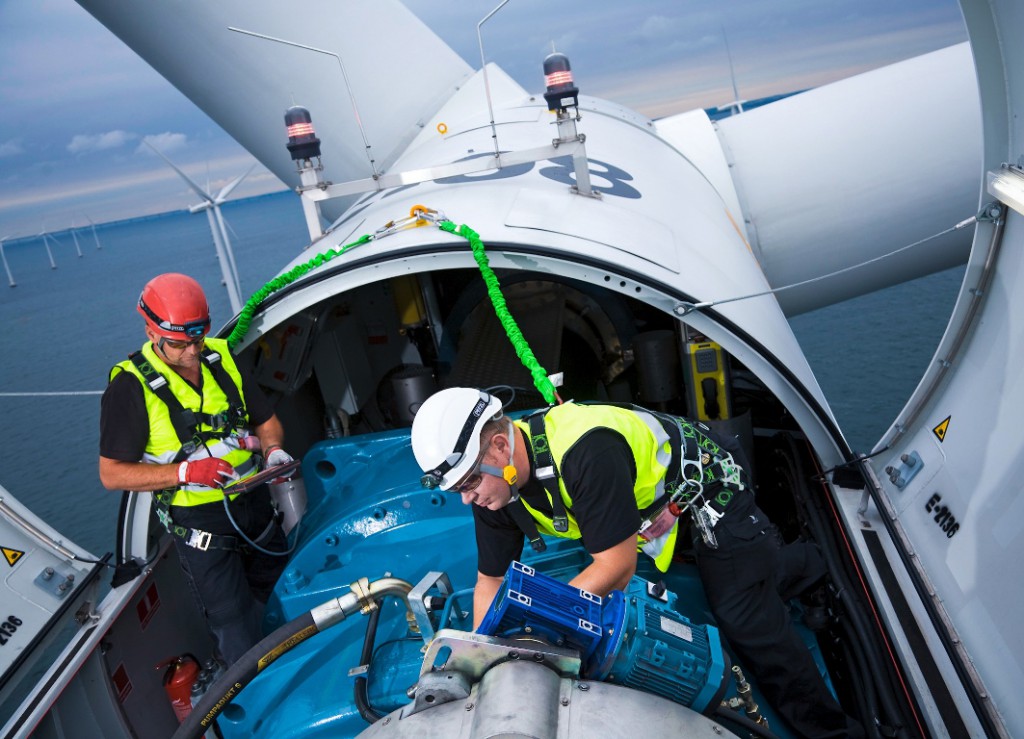 Before wind turbines can be installed, the most appropriate location or locations for them needs to be determined. The ...
Before wind turbines can be installed, the most appropriate location or locations for them needs to be determined. The ...
 Before wind turbines can be installed, the most appropriate location or locations for them needs to be determined. The ...
Before wind turbines can be installed, the most appropriate location or locations for them needs to be determined. The ...Basics of Wind Farms
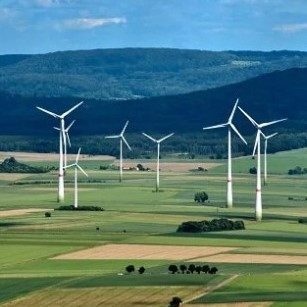 Throughout history, wind has been used to move grain mills or push the vessels that sailed the seas. However, it was not ...
Throughout history, wind has been used to move grain mills or push the vessels that sailed the seas. However, it was not ...
 Throughout history, wind has been used to move grain mills or push the vessels that sailed the seas. However, it was not ...
Throughout history, wind has been used to move grain mills or push the vessels that sailed the seas. However, it was not ...What is a Capacity Factor?
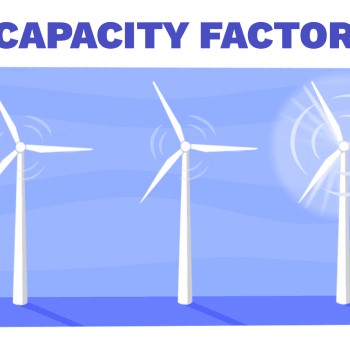 Wind turbines convert the kinetic energy in moving air into rotational energy, which in turn is converted to ...
Wind turbines convert the kinetic energy in moving air into rotational energy, which in turn is converted to ...
 Wind turbines convert the kinetic energy in moving air into rotational energy, which in turn is converted to ...
Wind turbines convert the kinetic energy in moving air into rotational energy, which in turn is converted to ...Basics of Wind Energy Production
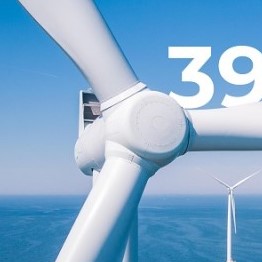 In the United States, most wind energy is commercially generated for delivery and sale on the grid. Wind projects vary in ...
In the United States, most wind energy is commercially generated for delivery and sale on the grid. Wind projects vary in ...
 In the United States, most wind energy is commercially generated for delivery and sale on the grid. Wind projects vary in ...
In the United States, most wind energy is commercially generated for delivery and sale on the grid. Wind projects vary in ...What is Wind Energy?
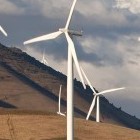 Wind is moving air. We can use the energy in wind to do work. Early Egyptians used the wind to sail ships on the Nile River. ...
Wind is moving air. We can use the energy in wind to do work. Early Egyptians used the wind to sail ships on the Nile River. ...
 Wind is moving air. We can use the energy in wind to do work. Early Egyptians used the wind to sail ships on the Nile River. ...
Wind is moving air. We can use the energy in wind to do work. Early Egyptians used the wind to sail ships on the Nile River. ...